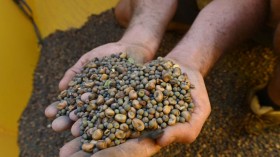In order to ensure healthy and thriving bee populations in the UK, researchers are encouraging home gardeners to plant a wide range of species to cater to the tastes of various types of bee.
The recommendation comes after new research indicated that while the most common species of bumblebee are not particular about the origin of the flowers they forage, other species - particularly Bombus hortorum, the long-tongued bumblebee - concentrate on domestic species that they've cultivated a taste for over the years.
Writing in an upcoming edition of the journal Annals of Botany, Plymouth University ecologist Mick Hanley reports that local gardeners promoting species diversity is a way to maintain healthy and diverse bee populations.
"Urban gardens are increasingly recognized for their potential to maintain or even enhance biodiversity," Hanley said in a news release. "In particular, the presence of large densities and varieties of flowering plants supports a number of pollinating insects whose range and abundance has declined as a consequence of agricultural intensification and habitat loss.
"By growing a variety of plants from around the world, gardeners ensure that a range of food sources is available for many different pollinators. But until now we have had very little idea about how the origins of garden plants actually affect their use by our native pollinators."
Hanley's recommendations stem from a study that attempted to determine whether bumblebees preferentially visited plants with which they share a common biogeographical heritage.
The researchers learned that bees generally do not discriminate between Palaearctic garden plants (which extend across Europe, north Africa and northern Asia) and non-Palaearctic garden plants. Instead the bees tend to forage on plants in proportion to flower availability.
But some bees, such as the long-tongued bumblebee, were documented exhibiting a preference for "native" Palaearctic-origin garden plants, choosing them for 78 percent of its flower visits.
The UK's most common bumblebee - the 'buff-tailed bumblebee' (Bombus terrestris) - appeared to favor non-Palaearctic garden plants.
"As a general rule, bees will go wherever there are flowers available," Hanley said. "However, if native plants were to disappear completely from our towns and cities, the long-term survival of some of our common pollinators - like the garden bumblebee - could be in jeopardy.
"In addition to growing truly native plants like foxgloves, where possible, gardeners can help native pollinators by setting aside a small area to allow native brambles, vetches, dead nettles, and clovers to grow. But as long as some native species are available in nearby allotments, parks, or other green spaces, a combination of commonly-grown garden plants from all around the globe will help support our urban bumblebees for future generations."
© 2024 NatureWorldNews.com All rights reserved. Do not reproduce without permission.





